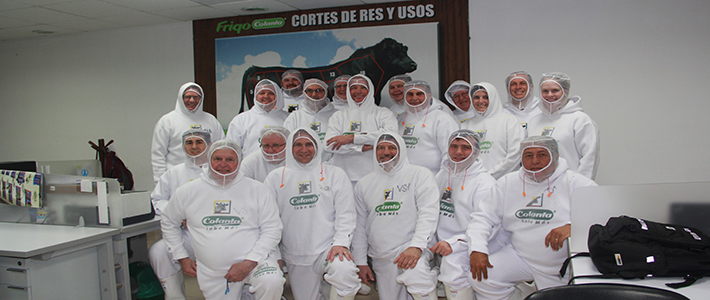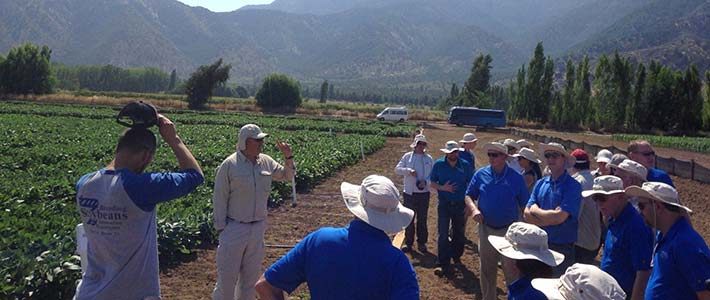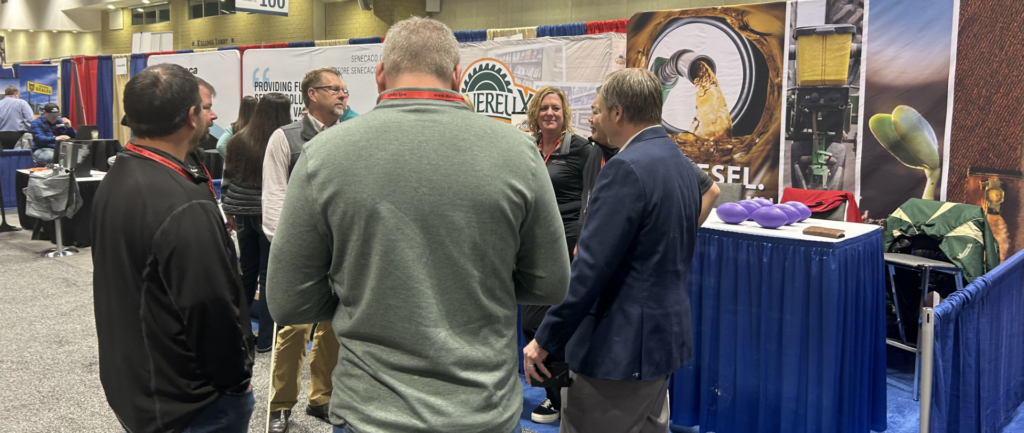In today’s farm economy, trade, exports and finding new markets have found a way to the top of the soybean industry’s priority list. In order to continually grow markets and promote soybeans, the soybean checkoff invests money overseas to ultimately help farmers’ bottom lines.
To view those investments, the Minnesota Soybean Research and Promotion Council (MSR&PC) has created its See For Yourself program where farmers can see firsthand where soybean checkoff dollars go overseas. Ten Minnesota soybean farmers have been selected for the 2018 mission to Colombia and Chile.
“This program is a great way to gain a better understanding of why the soybean checkoff is of value to farmers,” says Patrick O’Leary, MSR&PC chairman, who will also join the other participants from Feb. 3-11. “You don’t always see the direct investments. This program helps give farmers an inside look at investments made that affect both direct and indirect markets.”
Colombia and Chile were the chosen destinations, selected by a group of farmers who serve on the MSR&PC board. The two countries were selected because of their high-growth markets, says Minnesota Soybean Director of Market Development Kim Nill.
“Colombia is a rapidly-growing market for U.S.-origin soybeans, soybean meal, soybean oil, pork, beef and poultry products,” Nill says.
During the last U.S. soy marketing year, Colombia was the fourth-largest importer of U.S.-origin soybean meal and the fifth-largest importer of U.S.-origin soybean oil. It imported 151,000 tons of U.S.-origin soybeans.
Nill says Chile is similar, but with more emphasis on the meat and aquaculture industry, as well as soybean research and production.
“The group will tour a salmon aquaculture production and processing facility in southern Chile,” Nill says. “Chile has the world’s second-largest salmon aquaculture industry behind Norway. And U.S.-origin soy protein concentrate are used to feed salmon. Chile is one of the top five overseas markets for U.S.-origin soy protein concentrate.”
In 2017, Chile’s salmon feed manufacturers consumed 5,000 tons of U.S.-origin soy protein concentrate (SPC), making Chile the world’s fourth-largest importer of U.S.-origin SPC.
Also unique to this mission, participants will have the opportunity to tour the University of Minnesota and North Dakota State University winter plots in Chile, utilized by the soybean breeders to develop new soybean varieties faster by achieving two separate growing seasons per year.
“We hope this program gives participants an understanding of the many and diverse ways in which soy checkoff dollars are being spent to both expand existing overseas market segments and capture new market segments,” O’Leary says. “There’s nothing better than seeing it firsthand.”
MSR&PC tentatively hosts a See For Yourself mission every two years, selecting participants through an application process.
The list of Minnesota participants include:
| Fendrich, Mark | Wells, Minn. |
| Roiger, Kevin | Fairfax, Minn. |
| Beyer, Rodd | Wheaton, Minn. |
| O’Leary, Patrick | Benson, Minn. |
| Buesing, Donald | Granite Falls, Minn. |
| Ferguson, Anita | Alexandria, Minn. |
| Shroyer, Taylor | Nerstrand, Minn. |
| Demmer, Jerry | Clarks Grove, Minn. |
| Triplett, Douglas | Annandale, Minn. |
| Doherty, Joseph | Le Sueur, Minn. |







